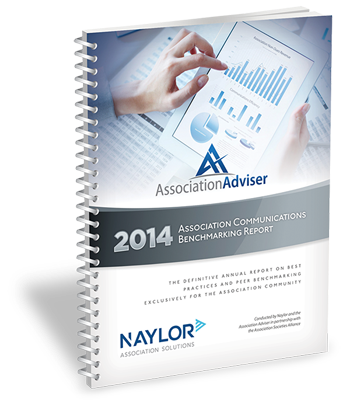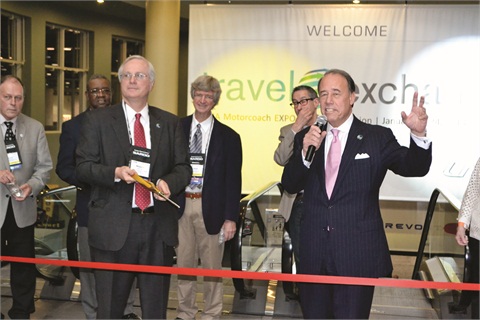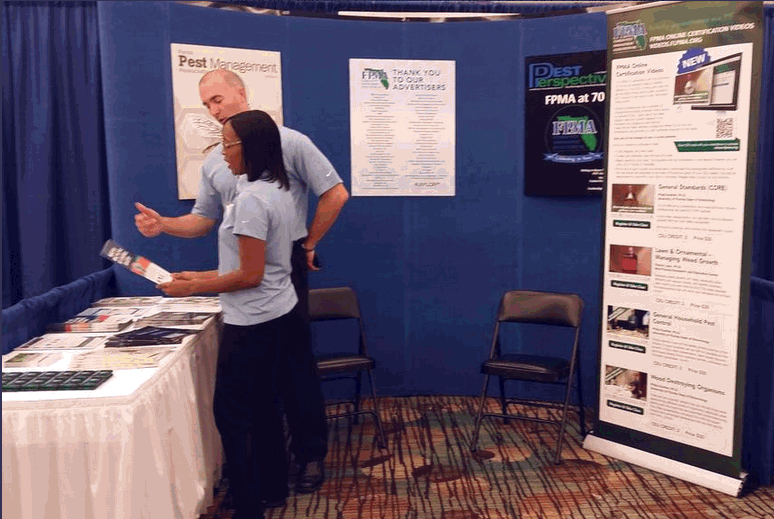Earning Non-Dues Revenue: Make the Effort To Do It Right
There are two universal truths about non-dues revenue: associations love it, and they can always use more. According to the Naylor sales team, however, there are several more non-dues revenue truths associations should know to maximize their non-dues revenue earning potential. A survey of our sales team and publishers revealed these additional truisms:
- NDR helps associations keep dues low and finances their lobbying, outreach and professional education programs.

- Know your association media’s worth, and give potential advertisers plenty of notice about ad opportunities within all your vehicles.

- Associations often underestimate the time and effort it takes to build an NDR program—people don’t come just because you build it.

- Earning NDR efficiently involves a true partnership and commitment to reaching revenue goals on behalf of both the sales partner and the association.

1. It’s okay to advertise, and bring in money.
Earning non-dues advertising revenue isn’t wrong. It’s how many associations supplement their purpose of bringing together industry professionals to network, educate and improve their industry. It’s how associations afford lobbying efforts and student outreach. It’s how certification programs and scholarships are funded. It’s how businesses give back to the group that supports them throughout economic booms and recessions. Most importantly, it’s how many associations make membership dues affordable.
“Some associations view advertising as the dirty word that shall never be uttered, let alone done,” said Naylor Group Publisher Jeff Carnes. “In reality, advertising provides a unique way for companies to align with a segment of the association’s membership and is a huge value to these vendors. They have marketing/advertising budgets that they plan on spending and if not asked, they will go elsewhere to spend it in areas that might not be as effective for that company or for the industry in general.”
“Associations want and like the revenue sharing aspect of [a publishing partner], but then want to place advertisers at the bottom of their websites or eNewsletters,” noted Group Publisher Troy Woodham. “Well-targeted advertisers aren’t ‘in the way’ of the content associations are trying to put out; they complement it.”
If your association wants to earn non-dues revenue, don’t be shy about promoting the advertising or sponsorships that create such revenue. A quality sales partner seamlessly brings together your buyers and sellers on your communications platforms to spur mutually beneficial business relationships.
2. Know your worth.
Telling your association’s story, and why the association is a good investment for advertising dollars, is also essential. Many people on Naylor’s sales team echoed the sentiment that associations don’t always know their worth, so they are unable to convey that worth to potential sponsors and earn their money.
“Associations often undervalue their communications programs and how vital they are to their members and the industry as a whole. They feel comfortable asking for money for membership or sponsorship, but often fail to apply the same importance to their communications,” said Jon Meurlott, Naylor’s group vice president. “They don’t convey their communications’ value, and the buying power of the decision-makers that read them, as much,” he said.

A communication gap analysis—a report that documents how closely the goals of an association’s communications plan align with the needs of members, vendors, advertisers and sponsors—can help association staffs uncover gaps between perceived and real strengths and weaknesses of their communications programs. Knowing these gaps allows associations to plan appropriately for future content and the advertising opportunities and roles that can accompany content platforms.
“A gap analysis should be the first step in any non-dues revenue program. Know yourself, and know your audience,” said Tara Ericson, Naylor group vice president.
3. Know what advertisers want, and how to deliver it.
It’s also important to know what the potential advertiser wants from their investment and how your association can best deliver that, whether it is more access to members, a better way to engage with members or the opportunity to demonstrate a new product, to name a few examples.
“Understanding what the advertiser wants and how the association can deliver it is paramount to earning more non-dues revenue,” Meurlott said.
“One of our association clients introduced a newly required certification program that many members wanted to complete through an online video channel. We offered banner positions around the video to advertisers, and sold them out. Members received the information they needed, vendors had the chance to reach members with their program-related services, and the association earned some additional non-dues revenue thanks to this content-advertising vehicle,” he said.
Plan out a complete program of advertising opportunities, whether time-based (for example, monthly placements or annual sponsorships) or event-based (for example, leading up to the next annual conference or covering an entire speaker series), that helps potential partners plan their advertising spend.
“Doing things piecemeal with different program stakeholders always creates chaos,” said Carnes. “When an advertising or sponsorship plan is well thought out, with a reason as to why someone should participate in the different programs, not only is it more successful in aligning with the partner’s goals and initiatives, but the association wins out in the end by bringing in more revenue.”
In other words, present all possible advertising opportunities for the foreseeable future, and aim high with comprehensive advertising/sponsorship packages. Businesses want comprehensive advertising opportunities that allow them to showcase their offerings in exclusive, unique and ongoing ways. Plus, they have budgets and goals that require long-term planning—just like associations do. Most businesses set their budgets for the upcoming calendar year in the fall. Make sure your annual advertising offerings are available by fall, and if you’re planning to launch a new communication vehicle, announce it in your marketing materials no later than September so your industry partners have the chance to earmark dollars for it.
“Continually hitting someone up for the ‘next great thing’ typically causes frustration and brings an element of, ‘Why didn’t you tell me about this earlier when I was making my quarterly or annual plans?’” added Carnes. “Too frequently, I see different association departments only concerned about their own turf and not the overall success of the association.”
4. Earning non-dues revenue takes work.
Investing quality time and energy in a marketing plan for your advertising or sponsorship program sets your association up to meet non-dues revenue goals.

“One of the biggest misconceptions about earning non-dues revenue through advertising is that it’s easy,” said Naylor Project Manager Amanda Goodwin. “Members and advertisers don’t automatically flock to an association’s marketing materials and purchase ads in a publication just because it’s there. As any association membership manager knows, people do not just come if you build it.”
Associations and their sales partners should invest time in finding viable sales leads together. While an association’s members and vendors may have joined in part to cultivate buyer-vendor relationships, not everyone has this goal. Thus, leads are not always obvious, and not everyone who should know about an advertising opportunity is aware. Marketing ad opportunities is usually essential.
“Most associations have the mindset that finding qualified leads is a given and that all you have to do to close a deal is call,” related Jack Eller, Naylor group publisher. “They do not invest in marketing yet expect new leads to be easy to find.”
“Associations have the strongest relationships with our prospects, as most are members. So anytime they can “warm them up” and hand them over, we have a significantly increased chance for closing the deal,” said Dave Petrillo, show manager for Naylor Event Solutions.
Make your sales partnership work for you by putting in the needed legwork it needs to be successful.
5. There’s a lot an association can, and should, do to help its sales partner earn non-dues revenue.
Marketing your media will boost its effectiveness as a member benefit and as a revenue generator. The type of information or action that will help bring in more advertising revenue differs by industry and by association, but according to our sales team, the following tactics will boost sales efforts in most industries:

- Specific lead sources, including competitor publications, affiliated associations, new members, supplier members, and past sponsors helps sales teams reach the people most likely to be interested in advertising.
- Detailed information about the status of the industry, its buying power, upcoming legislation that will affect industry operations and brand new or upcoming innovations will educate your sales partner about your members’ work and why it is important. It will also make them your advocate.
- Statistics about changes in membership, the buying power of members, the percentage of the industry the association represents helps your sales partner convey a robust picture of why advertising with your association is a solid choice.
- A collection of your association’s best media and most compelling sponsorship opportunities, helps your sales partner show your best side to potential advertisers.
Overall, earning non-dues revenue efficiently involves a true partnership and commitment to reaching revenue goals on behalf of both the sales partner and the association.
“Our best association clients are the ones that are engaged and supportive. The more they share what they are doing on their side of things, the more we can relay to our prospects,” said Petrillo.
Conclusion
Remember that all sales relationships are human at their core, and earning non-dues revenue is an endeavor between individuals: “In a world that has so many crazy moving parts, make sure your team knows they are valued and you appreciate them,” said Goodwin. “If your team is happy, they are going to want to work for you.”


